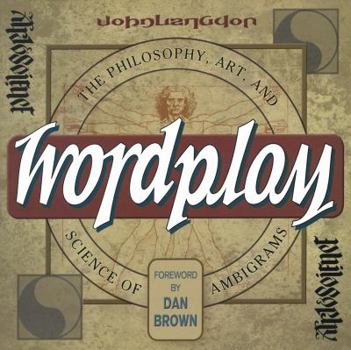Wordplay
Select Format
Select Condition 
Book Overview
Wordplay: The Art and Science of Ambigrams [Paperback] This description may be from another edition of this product.
Format:Paperback
Language:English
ISBN:0593055829
ISBN13:9780593055823
Release Date:January 2005
Publisher:Bantam Press
Length:224 Pages
Weight:1.75 lbs.
Dimensions:8.7" x 0.8" x 8.7"
Customer Reviews
5 ratings
wordplay
Published by Thriftbooks.com User , 15 years ago
The book was in great condition as listed, the price was beyond fair and shipping was fast.
Metaphor for Non-Duality
Published by Thriftbooks.com User , 15 years ago
A totally original and completely fascinating investigation into the way in which many fundamental concepts in life and science are effectively reconciliations of opposites. What we might initially think of as entirely different concepts or feelings may be just opposite poles of a single idea. Happiness and misery, desire and fear, love and hate are obvious examples. Here, Professor John Langdon begins and ends with the Taoist concept of yin and yang and the ancient divination system of the I Ching. But along the way he examines many aspects of the physical world - from astronomy to electricity and mathematics; the natural word - such as seasons and waterfalls; and the world of art and beauty. In each case, he provides stimulating insights into ways of looking at these subjects which will usually not have occurred to us. But - and this is the totally novel brilliance of the book - each topic is illustrated by his wonderful ambigrams. In their basic format, these are words which read the same upside down but here there are many variants, from mirror-image ambigrams to circles, spirals and 3-D models. And the concluding section explains the process of development of this intriguing art form. This is a book that you can pick up and delve into anywhere and enjoy. If you are wondering why the book should be relevant to Advaita, it is because the ambigram can be seen as a powerful metaphor. Firstly, it presents the appearance of duality but, on investigation is found to be only one - a resolution of seeming opposites. Secondly, the recognition that the symbol is an ambigram does not usually occur immediately. It is only after a period of study and contemplation that the realization suddenly occurs. In this sense, it is a metaphor for the enlightenment that takes place in the mind on the dawning of Self-knowledge. Lastly, appearances should not be taken at face value. If we look beyond the name and form, as John does in this book, we may discover the unity behind the outward show. Overall, a highly recommended book. (And this has nothing to do with the fact that John has also designed the triple ambigram for the cover of the second edition of `Book of One'!) Dennis Waite, author of The Book of One (N.B. If the image on the 'Book of One' cover that you see is not an ambigram, it is the wrong one! This is the case as I write this review.)
Ambigrasm!
Published by Thriftbooks.com User , 16 years ago
When I showed the cover of this book to my roommate, she started having a hard time focusing and felt dizzy. As she opened the book up and started to puzzle out all the letterforms and artistic fonts, she went into an almost trance like state. She was mesmerized for the next 2 hours as she devoured this book from cover to cover. After seeing Scott Kim's "Inversions" (as a result from reading "Angels & Demons" by Dan Brown), I became an instant fan of ambigrams. I wanted to pick up anything I could about the unique artform. This book completed my collection. This book is great for anyone interested in the artistic aspect of letters and the english letterform. Tatoo artists, students, graphic art designers, graffiti artists, kids all love this book. It makes a great coffee table book and is great to stir discussion at an informal get together. Buy this book not for the words you just read, but for the words you've yet to experience through the hands of John Langdon.
An amazing and entertaining book
Published by Thriftbooks.com User , 17 years ago
This book is just fantastic. It looks like an art book, but it's more than that. It's a philophy book. John Langdon makes us think about the words he draws and the meaning of them in our lives. Each word is an ambigram, and each one is beutiful and more intriguing than the other.
Ambigrams are Fun
Published by Thriftbooks.com User , 18 years ago
It should be noted that the text "wordplay" on the cover of the book is itself an ambigram. Turn it upside-down and it will read the same as right-side-up. You'll find dozens of examples of ambigrams that the author has patiently created. I've always had an interest in calligraphy and different typefaces. John Langdon's Wordplay allows the reader to look at this from a different point of view, and brings insight into how he goes about creating his intriguing ambigrams. It should appeal to the type of person who likes visual riddles or illusions. I first learned about the author's work through Dan Brown's Angels & Demons, which features several of Langdon's ambigrams. I'm glad I purchased the book and love looking through it. Recommended.





